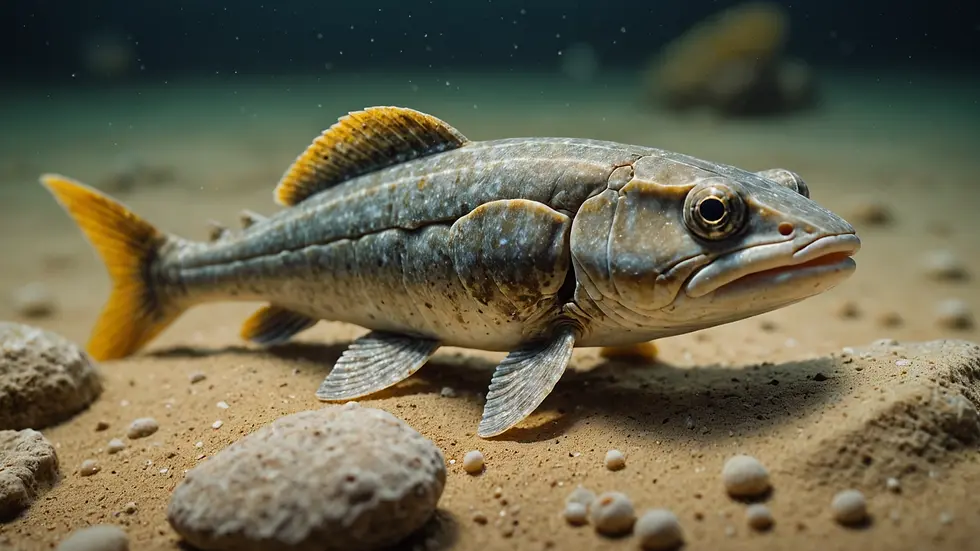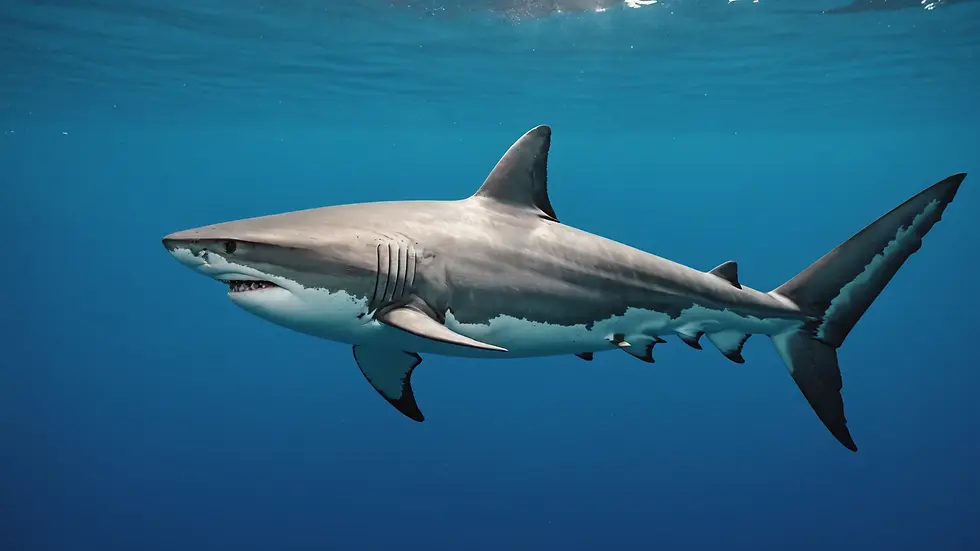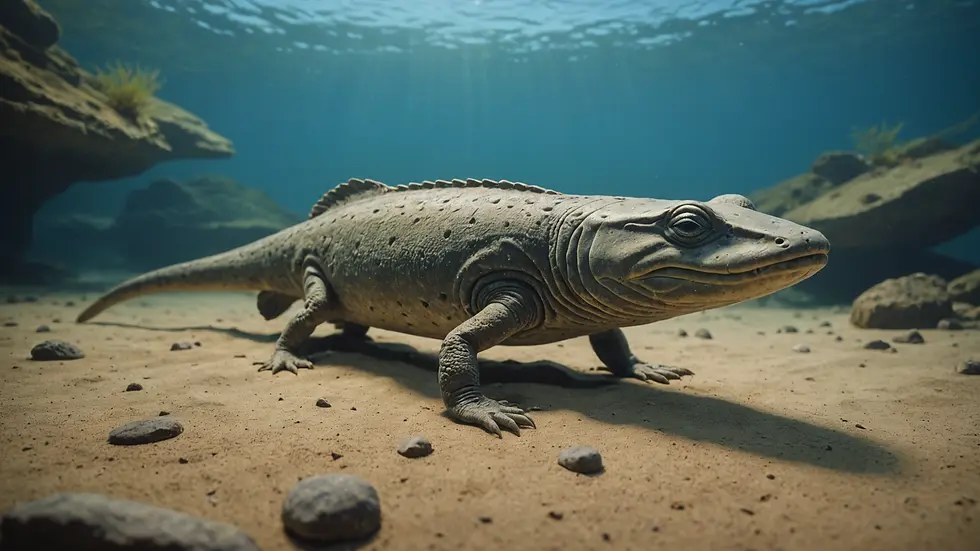How Did Fish Transform and Adapt Throughout Evolution?
- Jyotiraj Borah
- Feb 5
- 4 min read
Fish are among the oldest and most diverse creatures on Earth. They have survived for over 500 million years, adapting to their surroundings in remarkable ways. By examining their evolution, we gain insights into not only marine life but also the fundamental processes of evolution. This post will explore the evolutionary journey of fish from their early beginnings to contemporary species, showcasing their incredible adaptations to various environments.
The Origins of Fish
The story of fish begins in the Cambrian period, roughly 500 million years ago, with the first chordates. These early ancestors, resembling simple forms, laid the groundwork for all vertebrates, including fish. Among them were the jawless fish, such as lampreys and hagfish, which still swim in our oceans today.
These primitive fish were adept at surviving in their environments. Their elongated bodies and streamlined shapes allowed them to navigate efficiently through water. They relied on filter feeding, using their mouths to suck in nutrients. Studies show that these early fish played significant roles in their ecosystems, helping maintain the balance of marine life.
As evolution progressed, one of the most significant changes was the development of jaws. This advancement marked a turning point for fish, leading to greater diversity and complexity.

The Evolution of Jaws
Around 420 million years ago, during the Silurian period, jawed fish known as placoderms emerged. The appearance of jaws revolutionized fish anatomy and feeding strategies. With jaws, fish could grasp and consume larger prey, leading to an explosion of biodiversity in aquatic ecosystems.
Placoderms were semi-armored and exhibited advanced behaviors, including predation techniques. This adaptation allowed fish to thrive in various environments, from vibrant reefs to the depths of the ocean. For example, recent findings indicate that placoderms could grow up to 30 feet in length, showcasing their prowess as top predators of their time.
After the decline of placoderms in the late Devonian period, cartilaginous fish like sharks and rays rose to prominence. Their flexible skeletons exhibited their adaptability and allowed them to occupy numerous ecological niches.

The Rise of Bony Fish
Following the cartilaginous fish, in the late Devonian, bony fish, or osteichthyans, began to dominate the oceans. Currently, this group constitutes about 95% of all fish species alive today, highlighting their adaptability and resilience.
Bony fish possess a rigid skeleton made of bone and a swim bladder to aid with buoyancy. This innovation allowed them to maintain their position in the water column efficiently. Additionally, bony fish evolved specialized fins and scales, enhancing mobility and protection. For instance, the common goldfish can be found in a wide range of freshwater habitats, showcasing the versatility of bony fish.
These advantages enabled bony fish to explore diverse environments, from lakes and rivers to the vast open seas. They developed innovative reproductive strategies, including external fertilization, which dramatically increased the number of offspring. It is estimated that a single female salmon can produce up to 30,000 eggs in one spawning season.
The Transition to Land
The story of fish takes an incredible turn with the transition to land. About 375 million years ago, lobe-finned fish began to explore terrestrial environments. A remarkable example is Tiktaalik, discovered in 2004, which displayed features of both aquatic and terrestrial life.
These early tetrapods developed limb-like structures, enabling them to crawl onto land. This significant milestone marked a key moment in the evolution of vertebrates. While some fish adapted to life on land, others continued to thrive in water, leading to the rich diversity of life we see today.

Adaptations to Diverse Environments
The ability of fish to adapt to different environments is remarkable. Saltwater and freshwater fish have developed unique adaptations to survive in their respective ecosystems.
Adaptations of Saltwater Fish:
Saltwater fish have specialized glands in their gills to excrete excess salt while retaining water. For example, the clownfish can tolerate environments with high salinity due to these adaptations, thriving in the coral reefs of the Pacific Ocean.
Adaptations of Freshwater Fish:
Freshwater fish, such as the catfish, have more efficient kidneys, enabling them to retain salt and excrete excess water. This is vital for their survival in environments where salinity levels fluctuate drastically.
Additionally, certain species like the anglerfish have adapted to extreme environments, such as the deep sea. With their bioluminescent capabilities, these fish can create light to attract prey, showcasing the fascinating adaptations developed for survival in the abyss.
The Impact of Environmental Changes
Environmental changes throughout history have significantly influenced fish evolution. Shifts in climate, geological events, and fluctuations in sea levels have determined which fish species thrive or decline.
During mass extinction events like the Permian-Triassic extinction—about 250 million years ago—many species went extinct. However, this paved the way for the evolution of new groups, highlighting the constant pressure of change on evolutionary processes. For example, after this event, bony fish diversified, leading to the modern array of species we see today.
The Role of Genetic Mutations
At the core of evolution lies genetic mutation, introducing diversity essential for natural selection. Beneficial mutations over generations lead to new adaptations.
Color patterns in fish, for instance, can arise from genetic mutations that enhance camouflage or mating displays. These adaptations not only increase a fish’s chance of survival but also play a critical role in its reproductive success. It's fascinating to note that studies indicate that more vibrant colors in male fish can lead to up to a 40% increase in successful mating encounters.
Reflections on Fish Evolution
The transformation and adaptation of fish over millions of years is a captivating narrative that underscores the resilience and diversity of aquatic life. From their beginnings as simple chords to the wide range of species we see today, fish have continually adapted to environmental changes.
Understanding their evolutionary history provides essential insights into genetic mechanisms and the role of environmental factors in shaping life. As human activities increasingly affect aquatic ecosystems, recognizing fish evolution's significance is crucial for their future.
Fish, true to their ancient roots, remind us of the intricate connections between evolution, adaptation, and survival in an ever-changing world.




Comments